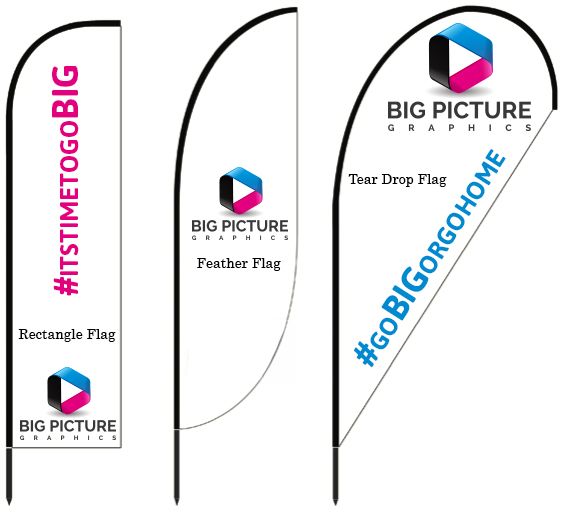The Big Picture Graphics’ Process

Following a design process helps tremendously in achieving the results each client comes to expect. The ultimate goal is to help viewers understand a message and deliver a product or service that keeps customers happy, informed, and left with a feeling of appreciation. In addition, keeping within a process helps projects stay on time and within budget.
Project Kick-Off
Gathering all the information at the start of each project is the one of the most important steps. This can be anything from a face-to-face meeting, an online questionnaire, phone call, or even a Skype meeting. This step helps establish the client’s objectives and expectations.
The Brief:
A design brief has a couple of key benefits, no matter how big or small the project seems:
- It ensures the client knows what he or she wants from the project
- It acts as your point of reference during the project
The more information the client provides initially, the better the result for everyone involved. Topics for inclusion in the design brief may vary, but a few good starting points may be:
- Corporate Profile – A summary of the business
- Market Position – An evaluation of the company’s service/product in relation to the competition.
- Communication Task – What’s the message trying to be conveyed and through what means (e.g. taglines, body copy, photography, etc.)
- Target Market – Demographics — the age, gender, income, employment, geography, lifestyle of those the client wants to reach.
- Objectives – What quantifiable result does the client want to achieve?
- Schedule/Deadline – A realistic schedule of how the project should proceed.
Research
After the Project Kick-off, it’s now time to get to work. Reviewing the materials provided by the client, this phase usually entails taking into account competitors, market trends, product/service differentiators, the history of the business, and the future of it as well.
Although this stage seems laborious, it pays off in the end. There’s nothing worse than creating a beautiful logo only to discover it’s too similar to a competitor’s.
Strategy
This step may vary depending on the scale of each project, but generally it’s best to develop a strategy before putting pencil to paper. Through this you analyze the research gathered and decide on design and functionality criteria. This can be as simple as a theme carried across all marketing materials. This strategy can be presented to the client to get approval or disapproval before moving on, in the hopes of getting more creative direction.
Development
Once you have a clear strategy, the idea is to then create preliminary design concepts based on the strategy developed. Developing concepts can be done through various means when inspiration strikes, but here are some of the most effective.
- Mind Mapping: A diagram that’s used to represent words, ideas, and tasks linked to your central idea. Encourages a brainstorming approach to planning and organizing tasks.
- Storyboarding: Meant to pre-visualize a motion picture, animation, etc by organizing illustration in a sequence. (Best used for digital signage)
- Layout Creation: Sketch layouts from collected inspiration, play around with color schemes and typography until a direction strikes you, and then explore it more.
Several different concepts can be developed through the above methods. The idea here is to create as many different options before choosing the most viable one. Through the help of the client, these ideas can then be narrowed down to a couple of ideas for further development and refinement.
Presentation/Refinement
Often best presented as a PDF file with the design in context. It’s now the job of the client to review the designs and provide feedback based on their objectives and the needs of their target audience.
At this stage the designer is tasked with making changes to the aesthetic elements based on client’s request or putting the final touches on an agreed upon design.
Production/Launch
With an approved design, the designer is now able to implement the finished piece across all deliverables.
Completion
With a solid process in place for completing a design project, we not only establish a closer relationship with our clients, but we take a lot of the guesswork away when it comes down to creating something memorable for them.
To learn more about our graphic design capabilities give us a call today at (720) 881-3988 or shoot us an email at info@bigpicturegraphics.com. We are ready and available to help you with any of your impact marketing projects, and look forward to helping you grow your business by getting your message out there in the biggest, most effective way possible.
Originally written by 1stWebdesigner Editorial Team on June 20, 2015
 How Your Paint Can Impact Your Vehicle Wrap – What to Know
How Your Paint Can Impact Your Vehicle Wrap – What to Know How to Wash a Vehicle With a Car Wrap – What to know
How to Wash a Vehicle With a Car Wrap – What to know Did You Know Big Picture Graphics Makes Banners?
Did You Know Big Picture Graphics Makes Banners? Congratulations to our Q1 Employee of the Quarter – Kurt Green
Congratulations to our Q1 Employee of the Quarter – Kurt Green 5 Business Sign Mistakes to Avoid
5 Business Sign Mistakes to Avoid